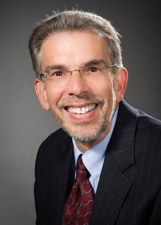Takeaway
As my father was dying, it became clear that he had many misconceptions. This reminded me of how important it is to explore each patient’s understanding of palliative care and hospice.

Connecting with Patients | June 28, 2023 | 3 min read
By Eric Last, DO, Northwell Health, Wantagh, New York
I’m neither a hospice nor palliative care doctor. I’m a PGY-35+ primary care internist, with a subspecialty in cultivating relationships with patients. I’ve fostered those relationships over decades, and learned to plant their seeds after a sincere and empathetic first visit.
Over time, patterns of disease emerge and become familiar. So when, just weeks after my mother passed away, my father became acutely jaundiced and was found to have a pancreatic head mass, the outlines of the next few months started to emerge. When his disease was determined to be inoperable and his overall debility prohibitive of chemotherapy, I became more certain of that path.
What followed were two parallel journeys: his path of illness, and my path to understanding fears, misconceptions, and misinformation about hospice and palliative care. Over the past several weeks, which featured end-of-life and goals-of-care discussions with several wonderful patients (and their families), I was able to put those lessons into practice. Here’s some of what I learned:
1. Put the patient first.
It’s their life and their death that’s being discussed. Their goals and wishes should matter the most.
2. Communicate and be curious.
Don’t be afraid to ask difficult questions. We need to be cognizant of the patient’s goals and desires for care. Does comfort and quality of life come before all else, or do they want to pursue any and all life prolonging treatments that may be available? And if the latter, what’s their motivation, and how do they perceive what that course would entail? Above all, be sensitive in how you ask your questions, and nonjudgmental in your reaction to their answers
3. Explore the patient’s perceptions of hospice and palliative care.
I was mortified to hear my father’s idea of hospice: “They fill you with morphine so that you die faster.” Residing in an assisted living facility, he’d seen the pattern: Morris (or June or Sadie or Gus) was hospitalized, then returned, then stopped coming to the dining room, then “went on hospice,” then was taken away in the dark of night by the black hearse. The perception: hospice caused their deaths. We need to pierce those misconceptions.
4. Reframe hope and allow it to evolve.
Ensure that patients know that just because we’re not hoping for a cure doesn’t mean there’s no other goal. Quality time with family and enjoying simple things that may bring a smile, all are within a framework of hope.
5. Be there.
Even though it may not be verbalized, patients may fear that we’re going to abandon them as their illness progresses. Reassure them, with sincerity and a hand on a shoulder, that we’re going to be with them for the duration.
6. Advocate when needed.
There will likely be others involved who may unwittingly say things that are totally in opposition to the goals of the patient and the treatment plan. I was speechless when I learned that a hospice doctor told my father, “Don’t worry, when the time comes we’ll have you high as a kite.” That pronouncement played directly into my dad’s fears and preconceptions. Step in when needed and remind others that the patient has arrived at this point with their own goals, wishes, and perceptions, and they need to be honored.
7. Honor loved ones.
Family members will come to this journey with their own preconceptions and ideas that need to be explored and addressed. Loved ones can provide us with insights about the patient that can open our eyes, minds, and hearts to the experiences they’ve shared over the years and remind us of the human being who also happens to be a patient.
8. Measure your words.
There can be a difference in how the phrase, “We’ll pursue comfort care only,” is perceived, contrasted with: “We’re going to stop things that are causing you distress without any benefit, and be aggressive with the things that will keep you comfortable and respect your goals and wishes.” Words matter. There’s no unit of measure that can quantify the impact that we can make at the end of life for patients in need, and for their families. And there’s no remuneration that pays more than the deep satisfaction of helping people at their most vulnerable hours.

This piece expresses the views solely of the author. It does not necessarily represent the views of any organization, including Johns Hopkins Medicine.

